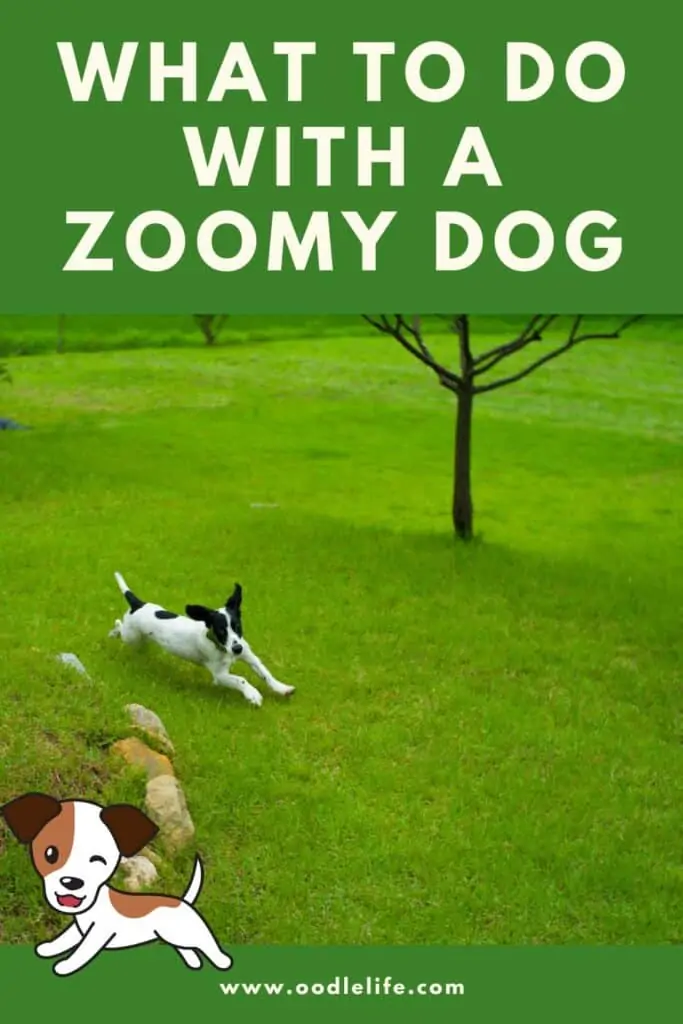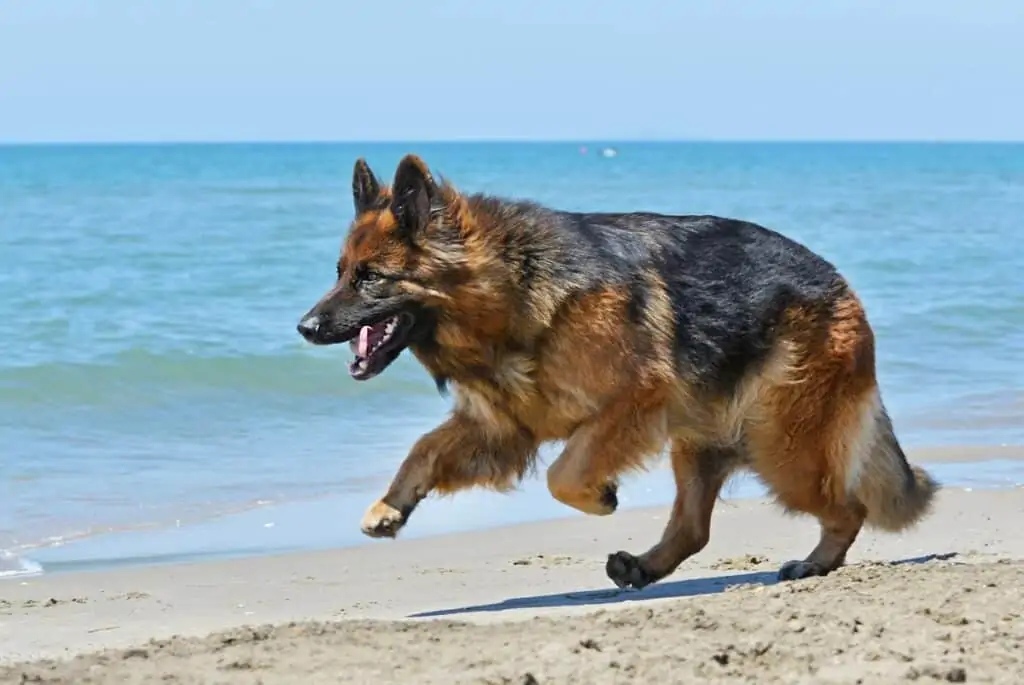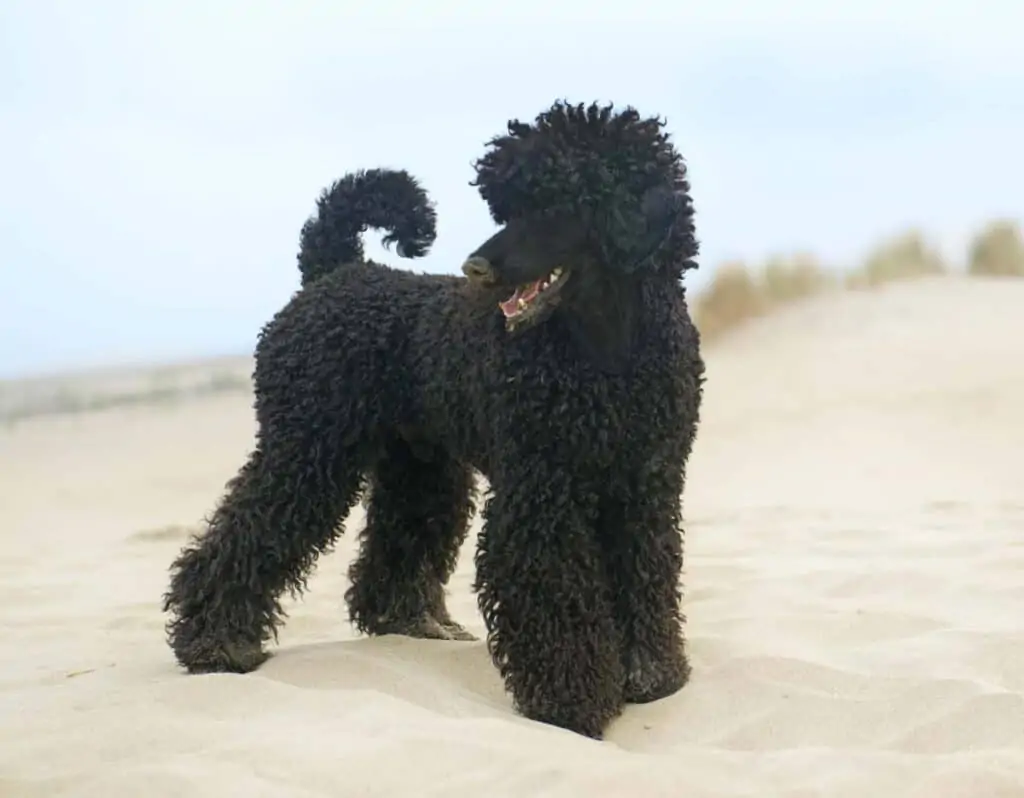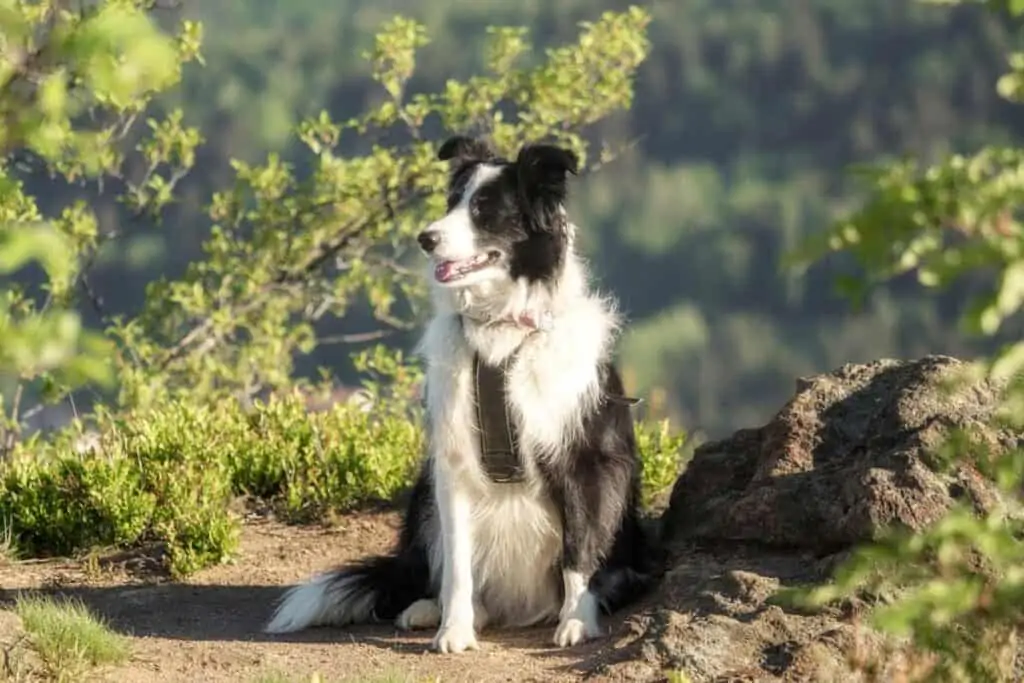What To Do with a Dog with High Energy Spurts
Have you ever wondered why your dog sometimes has these random bursts of energy? What’s causing these outbursts? Will these outbursts ever go away? What can you do to help your dog when they’ve got the “zoomies”? Continue reading to find out what to do with a dog with high energy spurts.

What are the Zoomies?
A Frenetic Random Activity Period (or FRAP for short) is the scientific term for what many dog owners endearingly refer to as “The Zoomies.” A FRAP is a seemingly random period where a dog experiences a sudden burst of energy.
More often than not, this period manifests in your dog chasing its tail or zooming around your backyard or living room with reckless abandon. Every dog breed is suspetible to a case of the dog zoomies – it is a typic example of a hyper behavior!
What Causes These Sudden Bursts of Energy?
The Zoomies are most common in puppies and younger dogs. Just like in human children, dogs have a lot of energy when they are young and tend to settle down more as they get older. Senior dogs can still experience sudden bursts of power, but they happen a lot less frequently than the energy bursts of a puppy.
Along with pent-up energy, there are several other reasons that a dog may experience The Zoomies. Boredom and not getting enough exercise are the most apparent causes of excess energy in dogs, both of which have pretty clear solutions.
A tired dog is a happy dog! However, did you know that stress and excitement can all trigger a FRAP?
For instance, a Cavapoo can would shake like a leaf while having a bath, only to run buck-wild as soon as bath time is over, and a Great Dane may run amok if they catch sight of food.
Different dogs have similar responses to various triggers, which makes identifying the cause of these outbursts more difficult for those who don’t speak dog.
Understanding your dogs’ breed is an essential part of understanding how to care for and interact with them. A dog breed with higher energy levels will experience random bursts of energy more often than a dog that prefers a more sedentary lifestyle.

What Breeds of Dogs Typically Have Higher Energy Levels?
If your dog is a breed that generally has high energy, it’s going to take a lot more to tire them out, which can lead to your dog having pent up energy that they need to release at various points in the day.
Border Collie: these dogs have a history of being bred as herding dogs. They are rarely a couch potato. This breed comes from a long lineage of dogs that had to run through farm fields. They are born to have the high energy levels that are needed to do their jobs effectively.
Australian Shepherd: this dog puts the “Herd” in Shepherd. Okay, dad jokes aside, the Australian Shepherd is another high energy dog originally bred for herding animals on the farm. These dogs are the more athletic breeds and enjoy increased energy activities like chasing a ball, frisbee, or even other animals (old habits die hard, am I right?)
Bernese Mountain Dog: in contrast to the herding dogs, Bernese Mountain Dogs’ job is to pull and transport heavy carts of goods for farmers to sell in other regions. Any bodybuilder will tell you that lifting weights requires just as much energy as long-distance running, and the larger breed Bernese is no exception. Bernedoodles (the super cute Poodle X Bernese Mountain Dog cross breed) can get entertaining bursts of the zoomies.
Jack Russell Terrier: the Jack Russell (and all terriers, for that matter) are known for their energy levels. Raised initially to go on hunting excursions, the Jack Russell is used to chasing and fetching prey. Because of their historically active lifestyle, the Jack Russell has a high energy store that needs to be used to keep them from getting into trouble.
Siberian Husky: popular for their striking looks, these dogs are the domesticated dogs’ closest relation to their wolf ancestors. Native to the harsher winter climates, this breed is known for its work on a dog sled. They work very hard and build up a veracious appetite (and eat alot of Husky food). Historically used to pull sleds loaded with goods and people through the snow and over ice – the kind of thing many humans will shy away from when it’s time to face the roads in the winter.
Labrador Retriever: one of the most popular family dogs due to their gentle and friendly temperament is another hunting dog. These dogs are often brought on hunting trips to retrieve the prey for the hunters. The Retriever’s job is one that requires a high supply of energy and agility, so it’s no surprise that they have kept these traits.
Poodle: the Poodle is another breed that has been historically used in hunting trips, though mainly used for retrieving fallen prey from the water. They have a soft mouth so were popular with duck hunters.
Their ability to track and locate items in water makes them an intelligent breed that needs mental stimulation to keep them happy and entertained. A puzzle toy goes a long way to keep the active mind of a Poodle stimulated.

German Shepherd: there’s a reason these dogs have a long history of work in the police and military forces. They are straightforward to train and have the right temperament for the demands of policing while still being a lovable dog for the family-oriented lifestyle of domestication. Their exercise needs are high, and thye sometimes get an unwarranted rap as a hyper dog breed.
Golden Retriever/Goldendoodle: these dogs have a long history of training for use as guide dogs and with good reason. They are easy to train while remaining friendly and lovable once the vest is off. This breed is often used for search and rescue missions, to great success. The Retriever is both energetic and easy to train, and they can also be a handful if they are not getting enough stimulation.
Doberman Pinscher: another popular breed in the field of policing and military work. These dogs are easy to train and highly protective, and intelligent. While they make incredible guard dogs, they still need a high level of engagement and exercise in their day-to-day life.
This list is by no means exhaustive-there are many breeds of dogs known for their high levels of energy and playfulness; it’s one thing that makes dogs a great pet. But it does show a clear pattern when looking at energy levels across breeds.
The dogs listed here are animals bred with a specific and very active lifestyle in mind. These dogs had essential jobs to do and needed a lot of energy to carry them out effectively.
These days, our pet dogs are living a more domesticated life. Now that they are unemployed, these dogs have stores of energy that aren’t expended in their day-to-day life. This extra energy can lead to random outbursts of hyperactivity throughout the day to relieve some of that pent up energy.
If your dog is a highly active breed and you are struggling to keep its sudden burst of energy under control, it may be a sign that your dog needs more exercise.
Or, if you feel like your dog is getting plenty of exercise but is still having outbursts of energy, there is a possibility that your dog is bored. Breeds that are typically highly intelligent can grow bored of the same old fetch game, leading them to act out in other ways. These smart dogs need mental stimulation along with their daily exercise. (Consider indoor dog games and activities).
An Australian Shepherd just may need a little extra playtime, while a German Shepherd or a Doberman may require puzzle games or a challenge to keep them enticed.

How Often Should Dogs Get the Zoomies?
It’s normal for dogs to get the zoomies around one time per day (or less). But, if your pup gets the zoomies two, three, or even more times during the day, it’s time to start looking for a solution. You’ll probably never eradicate the zoomies, but with more exercise or a new trick, you may be able to decrease it to a normal amount.
What Do with a Dog with High Energy Spurts
Again, the answer to this is kind of complicated. Ultimately, how you respond to your dogs’ energy bursts depends on the root cause of this excess energy.

Increase Their Exercise
If your dog is young or is a breed with a higher than average energy level, it could be as simple as increasing the amount of exercise they are getting. Sometimes the answer is as simple as letting them run it off.
An adult dog can exercise by running, walking, hiking or playing. An older dog will typially need less exercise that an adult dog.
If you cannot walk your dog consider asking a friend, neighbor, or hiring a dog walker to get the job done. A tired dog is a happy dog!
Teach Them New Tricks
If your dog is the type to get into things they shouldn’t or seems disinterested in the toys you bought them, they may need new and exciting challenges to keep their attention. Teaching your dogs some new tricks can hold their attention while also rewarding them for behaving.
Create an Obstacle Course
If you have a large backyard and the resources to do so, creating an obstacle course can be a fun and challenging experience for both you and your dog. Just keep in mind that you may need to change up the course frequently for a dog that is a fast learner.
Suppose your dog is excitable or tends to have high energy spurts when they see other dogs or when people come to visit. In that case, they may benefit from more training and socialization to help them regulate their excitement.
Find the Stressors
If your dog gets The Zoomies when stressed, you may want to explore what those stressors are. Is your neighbor’s toddler a little too aggressive when petting your dog? Help educate the child on the proper and respectful ways to interact with animals. Some dogs are better with children than others.
If bath time stresses your dog out, rewarding them for getting through the stressful situation can also give them positive reinforcement for good behavior.
Don’t Let a Dog with the Zoomies Wander Free

It is also important to remember that when your dog gets a case of The Zoomies, it is best to keep them inside or in an enclosed backyard to escape into the street. There is no force on Earth quite like a hyperactive dog, and having them on the loose can be a nightmare for any owner.
Your dog’s safety is just as important as the amount of exercise they are getting. Don’t forget that there are cat zoomies too and sometimes they will be out and about causing mischief (and you don’t want your dog to exhibit unwanted behavior and think the cat is a toy).
And remember, as your dog gets old, their energy levels will begin to settle down, and the spurts of energy will become less frequent. Even dogs that are retrievers (like a Cocker Spaniel or Cockapoo) will eventually be a less energetic dog. One day, they may even be a thing of the past. But for now, I hope you like running!